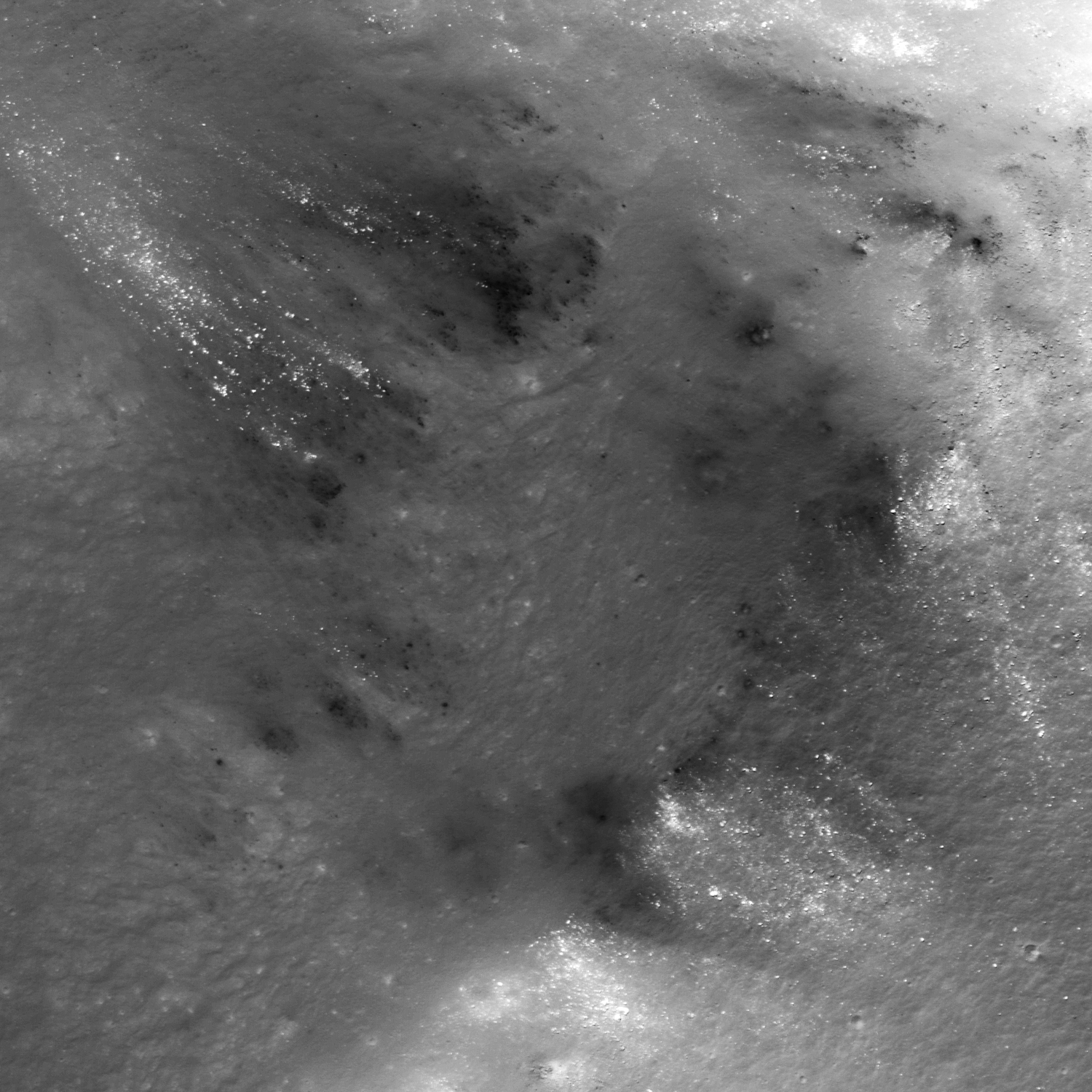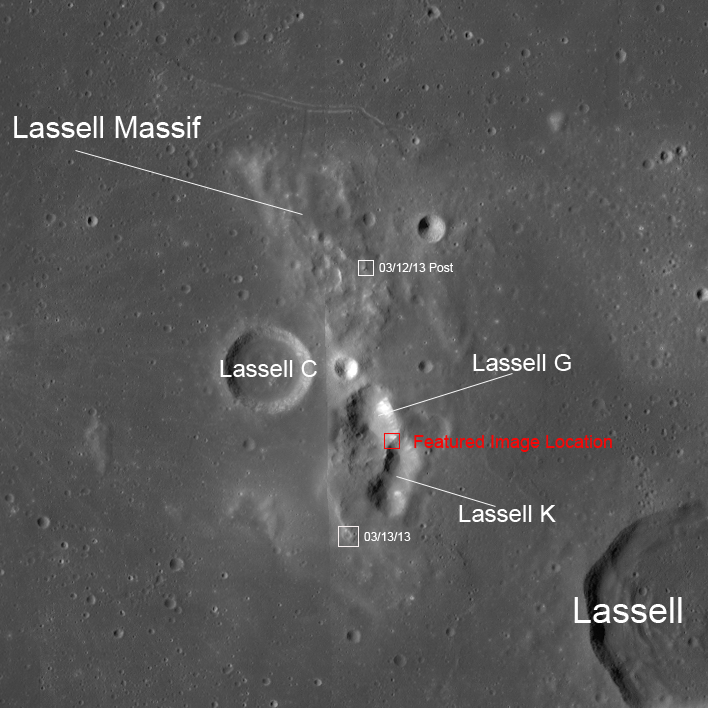
Today's Featured Image follows up on the two previous posts with another look at the Lassell Massif region of Mare Nubium. These prominent low reflectance deposits line the rims of the Lassell G and Lassell K pit features (see context image below). Their occurrence along the pit rims suggest a dark layer may be present just beneath the regolith surface, whose exposure has been encouraged by mass wasting in the pit walls. What caused such steep walled pits, and what are these low reflectance materials?
Our geologic train of thought continues from yesterday's post. We were discussing the geochemical differences between iron-rich, silica-poor (basaltic) and iron-poor, silica-rich (rhyolitic) magmas in the inner Solar System. But why should this matter, and what does it have to do with our images this week? The short answer is that basaltic lavas (and basaltic impact melts) have low viscosity, where rhyolitic lavas have relatively high viscosity. Basaltic extrusions filled mare basins like lakes, cascaded over fault blocks like waterfalls, and flowed like molten rivers on the Moon. On Earth and Mars they form flood basalt deposits and low-topography shield volcanoes. By contrast, rhyolitic lavas can be visualized as having a pasty or sticky consistency. They form steeper slopes, flow more sluggishly, develop high constructs, and can erupt explosively. Mt. St. Helens and other Cascade volcanoes are good examples for Earth.
A story of complex volcanism is emerging for the Lassell Massif region. The dark deposits may be pyroclastic in origin, and may have come from the massif source magmas themselves, or from adjacent volcanic fountaining (the floor of Lassell crater out of frame to the lower right of the context image is suspected to contain pyroclastic deposits). Based on LRO Diviner data the massif itself is silica-rich, which accounts for its topography, and suggests that Lassell G and Lassell K may be collapse calderas. They have very steep slopes and V-shaped profiles, in contrast to impact features.
Explore the full NAC frame below. Are there other areas here that present low reflectance deposits? Look closely at some of the impact craters. Other examples of silica-rich lunar volcanism may include the Gruithuisen Domes, features in the Compton-Belkovich area, and the Hortensius Domes.
Published by James Ashley on 14 March 2013

